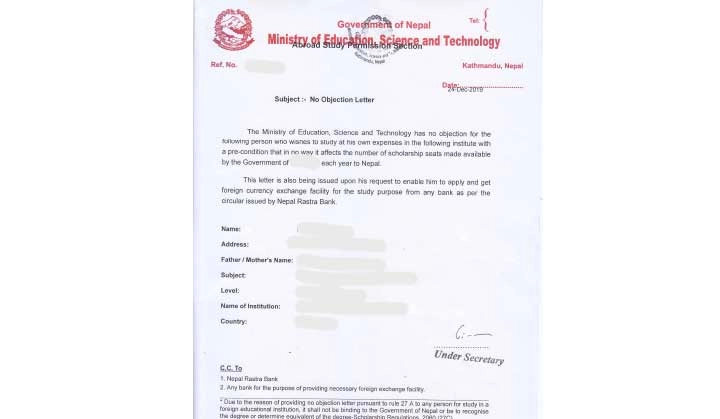
Pursuing graduate studies in the United States offers international students an unparalleled opportunity to advance their academic and professional careers. With its world-renowned institutions and diverse research opportunities, the U.S. attracts thousands of students from around the globe each year. However, navigating the admissions process can be complex and daunting. This guide provides a step-by-step overview to help international applicants successfully apply to U.S. graduate schools.
1. Research and Selection
Identify Your Goals: Start by defining your academic and career objectives. Consider what you want to achieve through your graduate studies, and how different programs and institutions align with these goals.
Research Programs: Explore U.S. universities and graduate programs that match your interests. Look at faculty expertise, research facilities, course offerings, and the program's reputation. Resources such as university websites, academic journals, and rankings can be helpful.
Consider Location and Culture: Think about the geographic location, climate, and cultural environment of potential schools. The U.S. is diverse, and each region offers a different lifestyle and opportunities.
2. Prepare for Standardized Tests
Understand Requirements: Different programs may require standardized tests such as the GRE (Graduate Record Examination), GMAT (Graduate Management Admission Test), or subject-specific tests. Check the specific requirements for each program.
Prepare and Register: Allocate time for test preparation, using study guides, practice tests, and prep courses if needed. Register for the tests well in advance to ensure you can secure a test date that fits your schedule.
English Proficiency Tests: Non-native English speakers typically need to demonstrate English proficiency through tests like the TOEFL (Test of English as a Foreign Language) or IELTS (International English Language Testing System). Check the score requirements for each program and prepare accordingly.
3. Gather Application Materials
Transcripts: Obtain official transcripts from all post-secondary institutions you’ve attended. These should detail your academic performance and be translated into English if necessary.
Letters of Recommendation: Request letters of recommendation from professors, employers, or professionals who can attest to your academic and professional qualifications. Provide them with sufficient time and information to write strong, personalized letters.
Statement of Purpose: Write a compelling statement of purpose (SOP) that outlines your academic background, research interests, career goals, and reasons for choosing the specific program and institution. Tailor your SOP for each application.
Resume/Curriculum Vitae: Prepare a detailed resume or CV highlighting your academic achievements, research experience, work experience, and relevant skills.
Additional Materials: Some programs may require supplementary materials such as a writing sample, portfolio, or research proposal. Ensure you provide all required documents as specified by the program.
4. Understand the Application Process
Application Forms: Complete the application forms for each program you’re applying to. Many schools use common application platforms such as the Common Application or university-specific portals.
Application Fees: Be aware of application fees and ensure you pay them on time. Fee waivers may be available for eligible students.
Deadlines: Keep track of application deadlines for each program. Prepare your materials well in advance to avoid last-minute stress and ensure timely submission.
5. Financial Considerations
Tuition and Fees: Research the tuition and fees for each program. Understand the cost of living in the area where the university is located.
Funding and Scholarships: Look for funding opportunities such as scholarships, assistantships, fellowships, and grants. Check both university-specific and external funding sources.
Financial Aid Application: If applicable, complete the necessary forms for financial aid, such as the FAFSA (Free Application for Federal Student Aid) or other institutional forms.
6. Visa and Immigration
Student Visa: Once admitted, you will need to apply for a U.S. student visa (F-1 visa). Obtain your Form I-20 from the university, which is required for the visa application.
Visa Application Process: Complete the DS-160 form, pay the visa application fee, and schedule a visa interview at the nearest U.S. embassy or consulate. Prepare for the interview by reviewing your application materials and being ready to discuss your study plans.
SEVIS Fee: Pay the SEVIS (Student and Exchange Visitor Information System) fee before your visa interview. This fee supports the maintenance of your student record.
7. Pre-Arrival Preparations
Accommodation: Arrange for housing either on-campus or off-campus. Universities often provide resources or assistance in finding accommodation.
Health Insurance: Check if your university provides health insurance or if you need to purchase it separately. Ensure you have adequate coverage for your stay in the U.S.
Travel Arrangements: Book your travel to the U.S. and plan your arrival. Ensure you arrive before the start date of your program to complete any required orientation or registration.
Cultural Adjustment: Familiarize yourself with U.S. culture, local customs, and university life. Joining student groups or forums can help you connect with others and ease your transition.
8. Orientation and Beyond
University Orientation: Attend the orientation program offered by your university. This will help you understand campus resources, academic expectations, and student services.
Networking: Engage with faculty, peers, and professionals in your field. Building a strong network can enhance your academic experience and career prospects.
Ongoing Support: Utilize university resources such as academic advising, career services, and counseling. These services can help you navigate challenges and make the most of your graduate experience.
Conclusion
Applying to graduate schools in the U.S. as an international student involves careful planning and attention to detail. By following this comprehensive guide, you can streamline the application process, meet all requirements, and enhance your chances of success. With the right preparation and support, your journey to studying in the U.S. can be both rewarding and transformative.
For personalized assistance and expert guidance throughout the application process, consider reaching out to an education consultancy. They can provide valuable insights and help you navigate each step with confidence. Your path to studying in the U.S. starts here—take the first step and make your academic dreams a reality.



.jpg)
.jpeg)
.jpg)